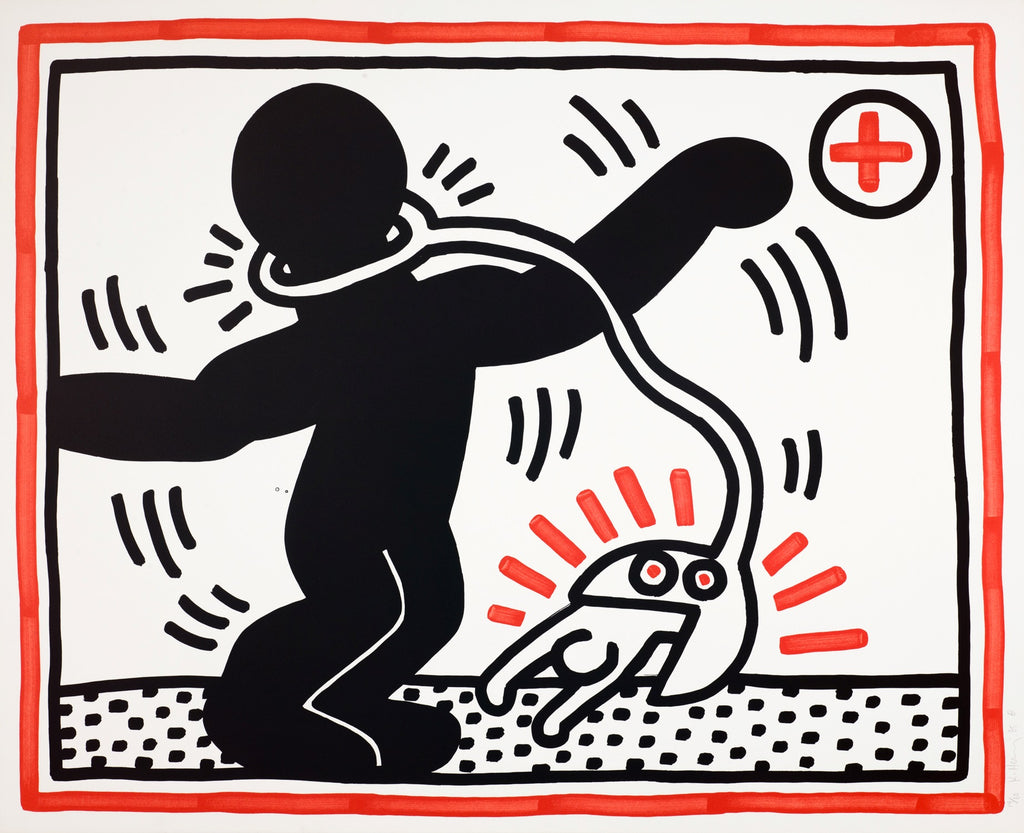Upload a photo of your space
For best results we recommend marking 10 inches on your wall with tape to get a sense of scale. Make sure to have the floor visible in the photo.







About the Work
"Free South Africa (#1)" is a lithograph created by Keith Haring in 1985 for his series 'Free South Africa'. From the edition of 82, the artwork is signed and dated 'K. Haring '85' and annotated vertically lower right. The image size is 30.25 x 37.5" and the artwork is framed in a contemporary white frame. The artwork ships framed and accompanied by a certificate of authenticity.
Keith Haring was a celebrated artist as well as staunch social activist, who used his art as a primary source of advocacy for the LGBTQ community, AIDS, and racial and social justice around the globe. He would join various groups for international causes including the Anti-Apartheid movement struggling against the oppressive South African government. After centuries of racial, social, and economic oppression, the liberation movement reached a turning point in the 1980’s as even more separatist laws and policies were being put in place.
The ‘Free South Africa’ series is composed of 3 lithographs that depict the tension between the black and white populations of South Africa. The white figure is a much smaller size, representing the small group of white elites that held power within the nation. The black figure represents the black majority population, fighting for their equality and rights. Movement lines scatter about the page emphasizing the struggle between the two figures in their battle. The small white figure, despite the battle, still tries to maintain its grasp on the restraint around the black figure’s neck, as a final attempt to maintain control and dominance.
The image exemplifies Haring’s unique ability to convey a message and communicate through simple and direct images. Haring often spoke frankly about his view of the effects that colonization and racism have on the world - these were issues of paramount importance to him. This fact spurred him to recreate these images in lithograph form, allowing for much wider distribution. He circulated around 20,000 posters around New York City in support of the Anti-Apartheid movement. In a journal entry from March 28, 1987, Haring wrote, “Control is evil. All stories of white men's ‘expansion’ and ‘colonization’ and ‘domination’ are filled with horrific details of the abuse of power and the misuse of people.”
About the Artist
Keith Haring was a social activist and artist who wasn’t afraid to depict and publicize controversial topics such as war, sexuality, life, and death with his art. Haring used New York City - the walls, stations, and buildings - as his canvas, creating masterpieces for the public eye. His signature cartoon style combined his outspoken political and social activism place Haring amongst the legends in the art world. Born May 4, 1958, in Reading, Pennsylvania, Haring grew up fascinated by the cartoon art of Walt Disney, Charles Schultz, and even Dr. Seuss. Haring’s father also drew cartoons as a hobby in his free time, inspiring a young Haring to perhaps make his own one day. Eventually, as a grown man, he moved to New York City to enroll at the School of Visual Arts. It is there Haring found his artistic peers and social niche and became acquainted with Jean-Michel Basquiat and Kenny Scharf, among other individuals in the underground art scene.
Please utilize the AR experience in a well-lit room.
Scan the room for surface detection.

Artwork will place in your room.
Using your fingers, align the horizontal white line
with your floor.

Double tap the artwork to scale to 100% size
and pinch to move on the screen.









